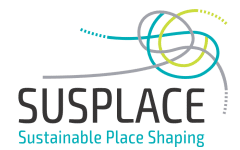By Catia Rebelo
As part of the Innovative Training Networks each Early Stage Researcher should be hosted by a non-academic partner. This collaboration, entitled secondment, aims to enhance researchers’ relationship with the labour market and to boost researchers’ professional skills.
My first secondment is hosted by a social cultural association called Binaural-Nodar, based in Vouzela, Portugal. The cultural association organizes and produces multidisciplinary artistic projects (mainly in the areas of sound, visual and media arts) with both local and international artists, followed by public presentations in the region.
Binaural-Nodar association coordinates several projects such as the Nodar Rural Art Lab and Lafões Land of Culture. In the project Nodar Rural Art Lab (developed since 2006), more than 150 international artists developed projects in close connection with the local communities. The Lafões Land of Culture is a more recent project and intends to establish links between communities/heritage/tradition and artistic experimentation as well as to give an artistic relevance to local cultural facilities and aligning itself with a new cultural strategy created by the Viseu Dão Lafões Cultural Network.
I just started my secondment on 13th February 2017, but this experience has already shaped my research. Indeed, since my first meeting with Luís Costa (the association’s coordinator) in August 2016, I started to think how could I optimize this collaboration. Since my background is in sustainable tourism and not in visual arts, first, I was mainly focused on the new skills that I would learn (e.g. filming and editing skills) with this collaboration. But, after some reflection, I thought that this secondment could actually bring me more than new skills… It could actually improve my research and make it bolder, more innovative and with a real impact on the territory.
Therefore, I decided to design my methodology approach based on action-oriented and participatory visual methods. More specifically, the method comprises of the following stages: 1) a group of individual stories/narratives about the place and their identity is collected and video-taped by me; 2) the participants watch individually their own short videos, edited by the me, and share their feelings and impressions about it (film-elucidation); 3) a focus group with all participants to watch each other’s short-films and work together to co-create a common story/narrative that they would like to share with others (e.g. visitors) about their place (composite film).
This method aims to give voice to local communities by allowing them to share the stories/narratives about their place; narratives that they think best represent their community and identity; narratives that may help to boost communities’ pride, sense of belonging and self-identity; and, to create a tangible impact on the territory by providing an opportunity for change-makers to take initiative and work together to shape their places.
For this method to succeed, during my collaboration with Binaural-Nodar association, I will need to learn from scratch about filming, sound and editing skills. Hence, it is here that my new adventure begins!
I have to admit that before the training I was a completely noob in audio-visual activities. Hence, by being aware of my limitations and taking advantage of being Portuguese, which really facilitated my integration process, I have decided to dedicate my first two weeks entirely to learn about filming, sound and editing skills. For that, I have counted on the help of the entire association’s team. Even financial accountant Diana, who served as a test subject in my audio-visual experiments – thanks Diana!
During my trainings, I had some sound and filming dedicated workshops, in which I learnt the theory and practice of both sound and image. My first workshop, developed by Luis Costa, was dedicated to sound capture and perceptions. In fact, you can see me in the attached video capturing the village sounds – video-taped by Luís. In the workshop, I also learnt how sound has an important role in films and foremost in interviews. First, I started to learn some theoretical insights about sound, then I collected some sounds and, afterwards, I learnt how to edit and improve the collected sounds in the Audacity programme (Mac version).
In the filming workshop tailored for me by Manuela Barile, the association’s filmmaker I learnt: a) some theory about what makes a good shot and common errors to avoid; b) then, theory about the camera and other important materials (e.g. microphones, tripod); c) how to shot different plans (e.g. landscape, first plan, filming with or without movement). After these theoretical insights, accompanied by Manuela I took the camera and the tripod and started to shot random places around the village.
Another part of the workshop was dedicated to editing skills, in which I used my own shots and started to edit them on an edition programme called Final Cut Pro (Mac version). With Manuela’s guidance, I learnt basic edititing tasks such as to join different shots, use image and sound effects, write subtitles and many others that you can see in the attached short film edited by me. This short-film sums up the activities that I developed during these first weeks at Binaural-Nodar, as well as illustrates my new skills that I hope to continue to improve in the future!
I thank Luis and Manuela for their guidance and support!
